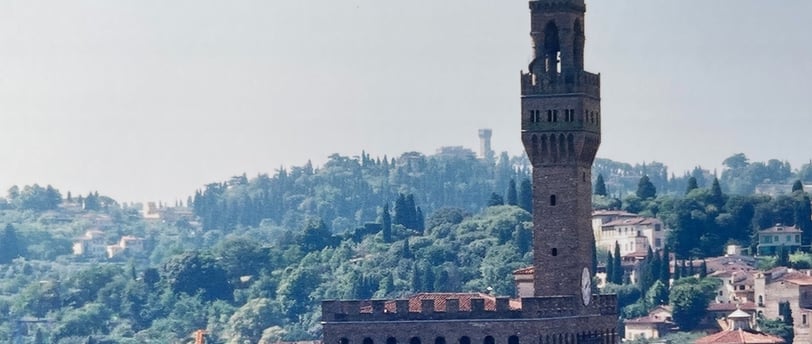FREE HOLIDAY GIFT WITH PURCHASE THROUGHOUT JUNE - SEE BOOKS FOR DETAILS
History of Florence part I
Research on the medieval town of Florence (Fiorenza)
ITALIAN RESEARCH
6/6/20241 min read


To give some idea of the architecture of Guidaloste's Fiorenza, I have chosen to show a photo of the Palazzo Vecchio. Anyone who has visited Florence or seen photos online will have seen this magnificent building, situated in the Piazza della Signoria in Florence. Work didn't start on the Palazzo Vecchio until 1299 and the Fiorenza of The Power of the Wouivre is around 20 years prior to that, but there are no surviving pictures of the city in those times. Guidaloste's Fiorenza would have been an immense sight to behold. At the time that Guidaloste arrived in Fiorenza, the famous buildings that now adorn the Florentine skyline were not yet built. Instead the medieval city was a forest of stone. The authorities had already ordered all the city's many towers (and there were many - at least 150 according to contemporary sources) to be cut from a height of around 70m (120 medieval Florentine braccia) to a maximum of 30m (50 braccia). To put this in perspective, the tower of the Palazzo Vecchio stands today at 94m high and was in fact, constructed from the remains of an existing family tower (hence the reason it stands off centre of the palazzo it extends from). Many of the medieval towns around Tuscany (and elsewhere in Italy) had such towers, a testimony to the constant feuding and warfare within the cities that each family needed such personal fortifications! San Gimignano is the best visual memory we have of this time, with 14 towers still standing at their original height. But I imagine, even coming from Siena, as Guidaloste did, with its 70-odd towers, that approaching Fiorenza and seeing over 150 towers, even a third of the size of the Palazzo Vecchio, rising out of its formidable walls, would have been very daunting indeed!
Today there are around 70 towers remaining in Florence but you would need to look carefully as most are no higher than the buildings they have been incorporated into.